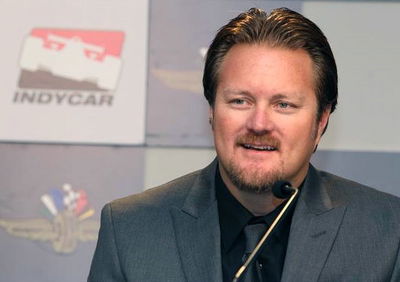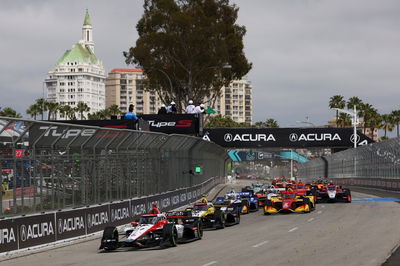New rule book issued to IndyCar teams

The latest version of the IZOD IndyCar Series rulebook has been delivered to teams competing in this year's championship, with a number of new processes and regulations to adjust to in 2013.
A modification to the points system means that any driver who now leads during any point in the race will receive a bonus point, a system already in place in the NASCAR Sprint Cup series. The pole position winner will continue to receive a bonus point (except at Indianapolis and Iowa because of their different qualifying systems) and the leader of the most laps will still pick up two extra bonus points
The points distribution has also been tweaked toward the back of the field. Previously anyone finishing in 18th place or below all received 12 points, but as of 2013 there will now be a one point step so that 19th place will earn 11 points, 20th place ten points, etc. down to 25th place and below which receive five points. Other points - including 50 for first place, 40 for second and 35 for third - remain unchanged.
"With the depth of competition we continue to see throughout the field, each finishing position and every point is vitally important to the championship," explained IndyCar race director Barfield. "The battles between 19th and 25th are very often hard-fought battles from the green flag to the chequered flag. Our drivers and teams are deserving of a points system that rewards competitors for their performance and efforts, no matter where they find themselves on the track."
But IndyCar is retaining the controversial engine change penalty widely disliked by fans. The scheduled lifetime of an engine will now be 2000 miles, up from 1850 in 2012, and any engine that fails to last this distance and has to be replaced prematurely will still incur a ten-place grid penalty for the car, although no penalties will be served in the Indianapolis 500 and will instead be deferred to Detroit the following weekend.
"After careful consideration and heavy debate, we believe our best option was to continue with the ten-spot grid penalty," said IndyCar's vice president of technology, Will Phillips. "We feel it is important to continue to be consistent with this penalty for both the long and short term."
In addition, any driver who goes over their total allocation of five engines during the season will not score any engine manufacturer points, although their driver championship campaign will not be hit.
"Our engine regulations were created to ensure cost-containment measures for both the manufacturers and teams, and those will continue in 2013," explained Phillips.
The changes to race procedures include:
- The pole sitter/race leader at restarts must line-up on the inside front row (previously the leading driver had the the choice of which lane to start in);
- Ten push-to-pass activations will be available to drivers at all street and road course events in 2013, with no activation delay or reset time;
- Pit selection for all events outside of the Indianapolis 500 will be based on qualifying results from the previous event (rather than the qualifying results of the last similar track with ovals matched with the previous oval, etc.);
- Pit lane speeds will be standardised at 50mph for all street/road courses and 60mph at ovals.
Teams can now choose how much fuel the cars carry on board at the start of the race, rather than be required to carry 18.5 gallons.
The series also announced that the car specifications will allow slightly less downforce at Iowa Speedway than 2012, while aerodynamic specs for the new event at Pocono are initially set at Indianapolis regulation.
All driver helmets will now have to meet FIA standards. The FIA 8860-2010 specification requires the helmet to pass single impact and shell hardness tests in addition to being certified to the Snell SA standard.
And in a minor but still welcome cosmetic move, the minimum size of the car numbers on the end-plates of the rear wing will be increased by one inch to eight inches after complaints about legibility.
In addition, Barfield also awarded the race director the power to park any car that interferes with the proper running of the qualification process. That means that if a driver does something to impede another, then the race director can delete that driver's two fastest laps, prevent the driver from progressing into the next elimination round or stop the driver from taking any further part in the current round.
"In 2012, the IZOD IndyCar Series saw an exciting season with an all-time high level of competition between our teams," Barfield summed up. "For 2013, we have adjusted processes and regulations throughout the rulebook to build on last year's successful introduction of a new car and engine package.
"In addition to enhancing the on-track competition and producing rules consistency, the 2013 rulebook is focused on changes that will make the sport easier to follow for our competitors and fans," he added.











